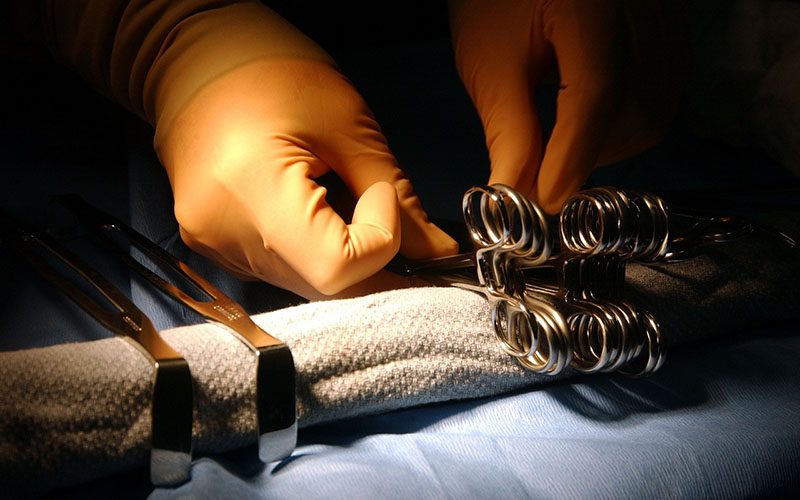We will never stop telling our patients to brush and floss regularly, but what happens when it’s too late? What happens when bad habits have led to dreaded gum disease?
Dentists offer a multitude of surgical and non-surgical treatment options for gum disease. In some cases, long-term treatment like regular cleaning can help treat and resolve gum disease. A number of gum diseases are quite common and treatable. Let’s first explore the three most common types of gum disease.

(12019 / pixabay)
1. Gingivitis
Gingivitis is the mildest form of periodontal disease. You might have it if your gums are swollen, red and bleed easily. With gingivitis, there is usually little to no discomfort, and it can be treated and reversed with dental treatment and daily oral care at home.
2. Aggressive Periodontitis
Aggressive periodontitis is a form of periodontal disease that affects patients who are otherwise healthy. This form is a little more serious as it can cause a rapid loss of periodontal attachment associated with bacteria and a compromised immune response, but it is still treatable.
3. Chronic Periodontitis
The most frequently occurring form of periodontitis is chronic periodontitis. This is a disease of the oral cavity that causes inflammation within the teeth tissues, progressive attachment and bone loss. It is caused by excessive plaque on the teeth that accumulates over time. Regular teeth cleanings are crucial to prevent chronic periodontitis.
Gum diseases are treated in numerous ways based on the severity of the disease and your specific health. After a thorough exam, your dentist will discuss a treatment plan with you and make recommendations about the next steps you should take. Treatment options for gum disease range from non-surgical therapies to surgical procedures. Non-surgical treatment can be used with less severe cases and work to control bacteria growth. Surgical procedures are needed when restoration of the tissues surrounding your teeth have been compromised.
Non-surgical treatments for gum disease include:
1. Dental Cleanings
For minor cases of periodontal disease, professional teeth cleanings will likely be enough. Regular teeth cleanings every six months are important to remove plaque and tartar buildup. If you have a more severe case, your dentist might recommend cleanings more than twice a year. Don’t skip your cleanings! They are key to preventing gum disease.
2. Scaling and Root Planing
This is a non-surgical deep cleaning meant to smooth rough surfaces and remove hardened plaque and tartar. It is done under local anesthesia. Rough spots on the teeth are made smooth to allow teeth reattachment to the gums.
3. Medications
Sometimes medications can help to treat gum disease. Certain antibiotics can be prescribed in different forms (mouthwash, pills, etc.) to reduce bacteria or preserve the attachment of the tooth to the bone.
Surgical treatments for gum disease include:
4. Flap Surgery
In more serious cases, flap surgery is required. This entails lifting back the gums and removing tartar. Sometimes the bones are also smoothed if needed.
5. Bone Grafts
When bone is destroyed by periodontal disease, bone grafts are used to replace bone and help bone regrow. This reinforces the attachment of the teeth and bone, helping to prevent gum disease from reoccurring in the future.
6. Soft Tissue Grafts
This procedure is for those with receding gums. Grafted tissue, possibly taken from the roof of your mouth, will be stitched in place.
7. Tissue Regeneration
Tissue regeneration is necessary when the bone supporting your teeth has been destroyed. This surgery stimulates bone and gum disease growth. It is paired with flap surgery where a piece of fabric is placed between the bone and gum tissue. This keeps the gum tissue from growing into the area where the bone ought to be. Once done, your bone and connective tissue should be able to regenerate.
8. Bone Surgery
Bone surgery is for those with bone loss. It is a simple procedure that smooths shallow craters in the bone due to moderate and severe bone loss. Flap surgery is performed first and then the tooth is reshaped to decrease craters. The goal is to make it very difficult for bacteria to grow.
In many cases, non-surgical treatments or procedures are all that are needed to treat gum disease. It gets more serious when the tissue surrounding the teeth is unhealthy. In those cases, a non-surgical option might not be enough.
We can’t stress enough how important it is to brush and floss twice a day and stop by your Davis County dentist for a tooth cleaning every six months. Oral health should be a priority as it can affect other aspects of your health. You may hate going to the dentist, but you’ll hate the effects of gum disease a lot more. Don’t put it off any longer. Give us a call to schedule a teeth cleaning!
